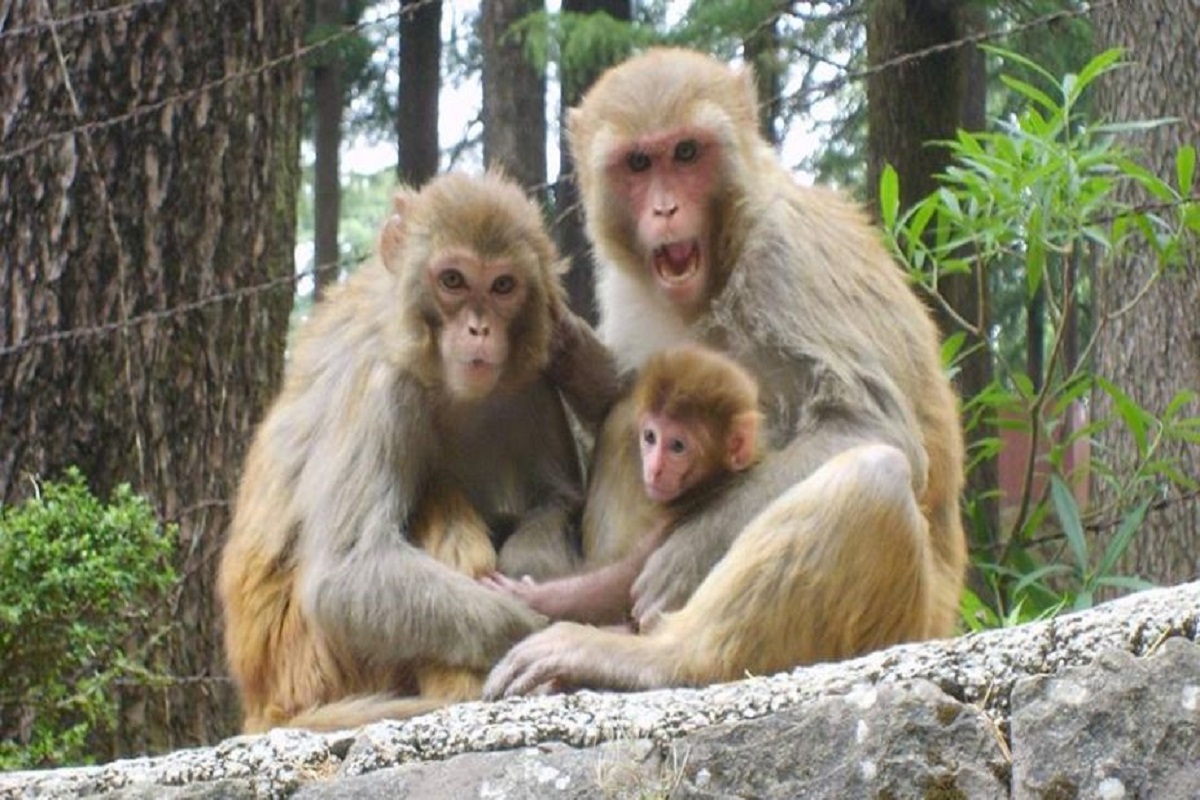Battling with a mammoth debt, Sri Lanka’s Agriculture Minister last week announced a plan to export 1,00,000 monkeys to China, the country’s biggest bilateral lender.
According to the Minister Mahinda Amaraweera, the ‘business’ is to get rid of the endemic toque macaques or common monkeys in Sri Lanka, which have won the wrath of farmers for destroying crops. According to China, the request for monkeys was for them to be distributed among 1,000 zoos and the Minister had even appointed a committee to study the project.
Advertisement
However, planned monkey export to China has been opposed by environmentalists and animal rights activists who complained that the minister’s decision needs a comprehensive study especially in a backdrop where there had been no census of monkeys over the last 40 years.
Leading environmental rights activist Jagath Gunawardana demanded clarity and transparency on the plan to export the animals which are not a protected species in Sri Lanka but are in the international red list of endangered animals. “We want to know why they want so many monkeys — whether it is for meat, medical research or some other purpose.”
The environmentalist and animal rights activists, however, are against having the monkey business with China which some suspect as similar to donkey business with Pakistan. In last October it was announced that China was keen on importing donkeys and dogs from Pakistan, a cash-strapped country like Sri Lanka. Chinese interest in donkeys were to use the animals’ hide to manufacture traditional Chinese medicines “eijao” or donkey-hide gelatin that is believed to have medicinal properties. However Sri Lanka’s animal rights groups and others are dead against having the same fate of Pakistani donkeys to Sri Lankan monkeys.
The activists’ protest seems justifiable as business with China is interpreted with suspicion as opposed to any other country. No financial detail of possible monkey export to China was immediately disclosed by either party.
Not only with monkeys, given the past experience with multi-dollar million, white elephant Chinese credit projects like country’s second international airport, harbour, conference hall, highway all the island’s rural southernmost point in Hambantota which is also the key location of China’s BRI’s ‘Maritime Silk Road’ in the Indian Ocean, questions are now being asked what benefit Sri Lanka gained by becoming the biggest debtor to Beijing. While China holds over a fifth of Sri Lanka’s bilateral credit, what benefits Sri Lanka had reaped with these billion dollar loans are unknown to most.
It is a common knowledge that in the extremely corrupt political hands like in Sri Lanka, with no transparency with regard to financial handling, China, which is famous for offering commissions and kickbacks for anyone who would help their plans and become the victor, is able to get its plans through.
With such a history, this week’s two other Asian giants, Japan and India, together with France announced a common platform for talks among bilateral creditors to coordinate restructuring Sri Lanka’s debt. However, China last month announced that it would offer debt relief to the island nation for 2022 and 2023 in line with an IMF bailout program.
Japanese Finance Minister Shunichi Suzuki, who announced the creation of a platform, extended an open invitation to China stating, “I hope many countries will participate. It will be very nice if China will join,”
While the Japanese Finance Minister made the request, China’s Foreign Ministry spokesman in response had reiterated the extension on Sri Lanka’s debt service.
“Sri Lanka will not have to repay the principal and interest due of the Bank’s (China’s Exim Bank) loans during the above-mentioned period, so as to help relieve Sri Lanka’s short-term debt repayment pressure; meanwhile, the Bank would like to have friendly consultation with Sri Lanka regarding medium- and long-term debt treatment in this window period,” the spokesman from Beijing said.
The proposed platform and other debt restructuring measures are desperately needed for Sri Lanka to secure a $2.9 billion bailout package and start repaying around $6 billion annually until 2029.
Japan, and France, Paris Club members and India G20 chair, the key countries which initiated the platform hope that it would be a model for solving the debt burdens of middle income countries.
But it is uncertain whether China would join this historic initiative. The group has sent an invitation to all of Sri Lanka’s bilateral creditors, including China, and hopes to hold the first round of talks at the earliest date possible, said Japan’s top currency diplomat Masato Kanda.
Playing a vital historical role to support her Southern neighbour, India had been with Sri Lanka throughout the crisis. Despite Sri Lanka having played the China card on a number of occasions ignoring India and Japan, it was India which was first to inform the IMF for debt relief support to Sri Lanka. The announcement in January was in addition to nearly $4 billion financial assistance within six months from January 2022, the period the country went through a major political turmoil.
Acting on the same spirit, last week, Indian Finance Minister Nirmala Sitharaman attending a high-level meeting on the sidelines of the IMF-World Bank Spring Meetings, announced India’s commitment to help Sri Lanka in handling the on-going economic crisis. Sitharaman stressed that a collaboration among creditors was important to ensure transparency and equality in treatment of all creditors in the debt restructuring discussions.











